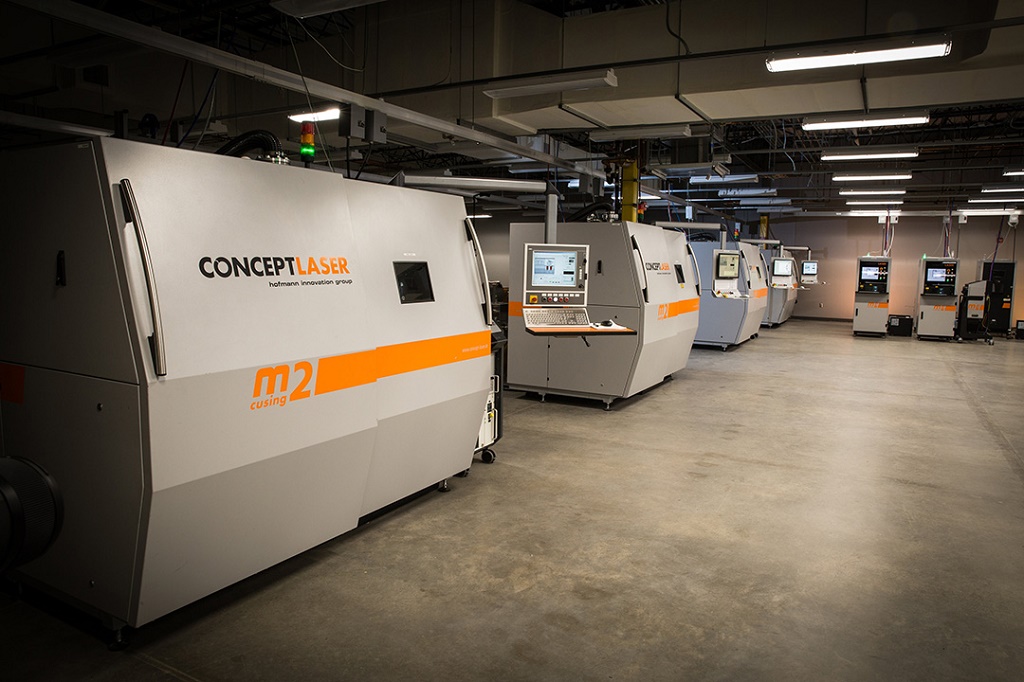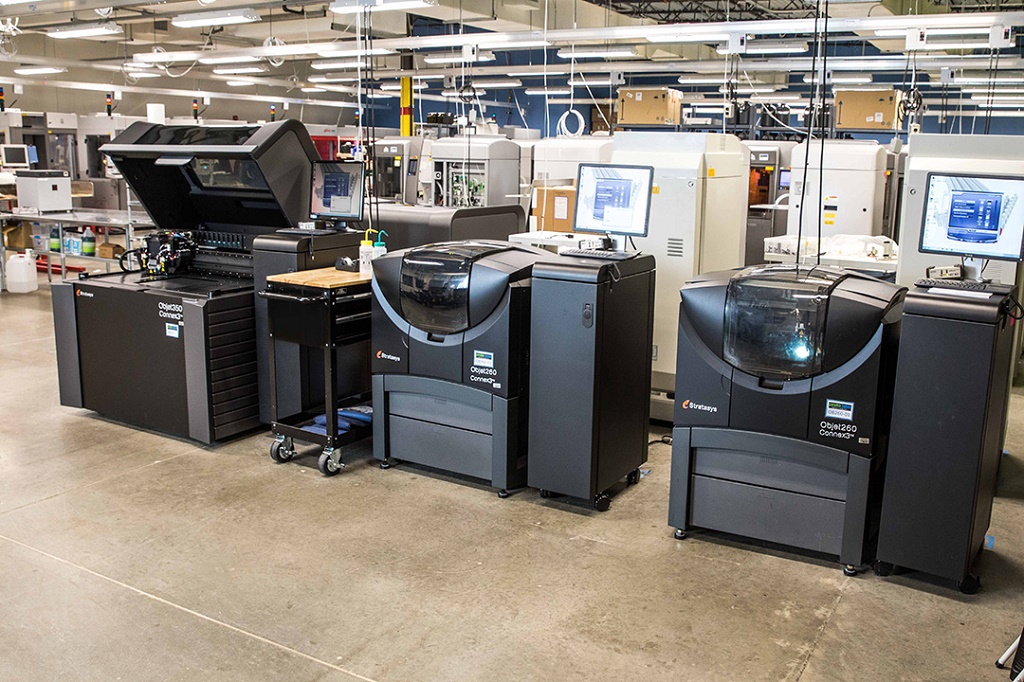On Friday, November 4, 2022, digital manufacturer Protolabs (NYSE: PRLB) reported net income during the third quarter of 2022 and revenue that came in near the bottom end of the guidance range at $121.7 million. Considered one of the fastest manufacturers of custom prototypes and on-demand production parts with manufacturing facilities in the US, the UK, and Germany, Protolabs’ weakened revenue results from a 12.3 percent decline in the brand’s injection molding service due to a lower level of follow-on parts orders and predominantly due to the challenging macroeconomic climate, which follows two-quarters of economic decline in the first half of 2022 in the US alone and saw business confidence falling globally.
Otherwise, Protolabs’ 3D printing services have grown double digits year-to-date (11 percent), and the online manufacturing platform Hubs (formerly 3D Hubs), which joined the Protolabs family following its acquisition in January 2021, continues to expand. Hubs generated $12.1 million of revenue in the third quarter, representing year-over-year growth of 38.5 percent.
According to Protolabs Chief Financial Officer (CFO) Dan Schumacher, Hubs’ revenue grew 50.1 percent in constant currencies. This upward trend in 3D printing is attributed to a combination of Protolabs’ best-in-class digital manufacturing services and Hubs’ digital manufacturing partner network that creates “a unique model that will win in the long run.”
Commenting on the quarter’s results, Protolabs President and CEO Rob Bodor also said, “We experienced continued softening of our Injection Molding business. However, we are pleased with the continued growth of our other digital manufacturing services and Hubs business. As we face an uncertain economic environment ahead, I am confident in our strategy and the value we bring to market, and the ability of our team to deliver long term revenue growth and profitability.”
 A metal powder bed fusion room at Protolabs. Image courtesy of Protolabs.
A metal powder bed fusion room at Protolabs. Image courtesy of Protolabs.Following significant growth in the third quarter of 2021, parts revenue decreased by 17 percent during the quarter ending September 30, 2022. As was the case in the first half of 2022, the third quarter injection molding growth rate was negatively impacted by the absence of several large parts orders that occurred last year. This lower volume in injection molding, combined with the continued headwind from the closure of Protolabs’ Japan business last May, drove a sequential gross margin decrease. At the same time, Hub’s gross margin in the third quarter was 26 percent compared to 26.4 percent in the second quarter of 2022.
Focusing on its wide range of services, which comprises 3D printing, injection molding, CNC machining, and sheet metal fabrication, Protolabs says it works with 55,000 customers every year on various projects, including medical device manufacturing, space exploration parts, electric vehicle developments, and sustainable energy sources.
As stated by Bodor and Schumacher during an earnings call with investors following the release of the quarterly report, total operating expenses resulted in $40.9 million or 33.6 percent of revenue compared to $42.3 million or 33.4 percent of revenue in the second quarter of 2022. This sequential decline in operating expenses was driven by a $1.2 million gain from selling an R&D facility in the North American region that was no longer in use. In addition, these decreases were partially offset by continued investment at the Hubs 3D printing sites.
 PolyJet 3D printing at Protolabs. Image courtesy of Protolabs.
PolyJet 3D printing at Protolabs. Image courtesy of Protolabs.As far as the business’s financial position is concerned, Schumacher explains that it “remains strong” after producing $20.5 million in cash from operations in the quarter. Year to date, cash generated from operations is up 60% over 2021, which the firm’s executives attribute to the strength of Protolabs’ “unique digital manufacturing model.” Also, the company repurchased $7.8 million in shares during the quarter and had $113.9 million of cash and investments on the balance sheet by September 30, 2022, remaining debt-free.
“As we monitor the economy, we are tightening our cost controls and will continue to focus investments to fuel the execution of our strategy,” suggested Schumacher.
With uncertain demand levels due to the challenging macro environment and the closure of the Japan operation, which is expected to have a $3.5 million negative year-over-year impact on the company’s revenue growth, Protolabs released a light guidance which anticipates revenue of between $107 million and $115 million in the fourth quarter of the year. Comparatively, last year, revenue for the fourth quarter was $123.6 million. However, the entire year witnessed a record annual revenue of $488.1 million for the company.
Schumacher indicated that management expects the foreign currency to have an approximately $4.2 million unfavorable impact on revenue compared to the fourth quarter of 2021 and fourth quarter non-GAAP earnings per share between $0.18 and $0.26. As for the company’s 2023 outlook, Bodor said to investors that they would not discuss any guidance at this time but indicated that plans for the end of 2022 and onto 2023 include controlling spending based on volume levels and focusing on investing responsibly for the long term in a way that is adaptive to the current economic environment.
Subscribe to Our Email Newsletter
Stay up-to-date on all the latest news from the 3D printing industry and receive information and offers from third party vendors.
Print Services
Upload your 3D Models and get them printed quickly and efficiently.
You May Also Like
Reinventing Reindustrialization: Why NAVWAR Project Manager Spencer Koroly Invented a Made-in-America 3D Printer
It has become virtually impossible to regularly follow additive manufacturing (AM) industry news and not stumble across the term “defense industrial base” (DIB), a concept encompassing all the many diverse...
Inside The Barnes Global Advisors’ Vision for a Stronger AM Ecosystem
As additive manufacturing (AM) continues to revolutionize the industrial landscape, Pittsburgh-based consultancy The Barnes Global Advisors (TBGA) is helping shape what that future looks like. As the largest independent AM...
Ruggedized: How USMC Innovation Officer Matt Pine Navigates 3D Printing in the Military
Disclaimer: Matt Pine’s views are not the views of the Department of Defense nor the U.S. Marine Corps Throughout this decade thus far, the military’s adoption of additive manufacturing (AM)...
U.S. Congress Calls Out 3D Printing in Proposal for Commercial Reserve Manufacturing Network
Last week, the U.S. House of Representatives’ Appropriations Committee moved the FY 2026 defense bill forward to the House floor. Included in the legislation is a $131 million proposal for...

































